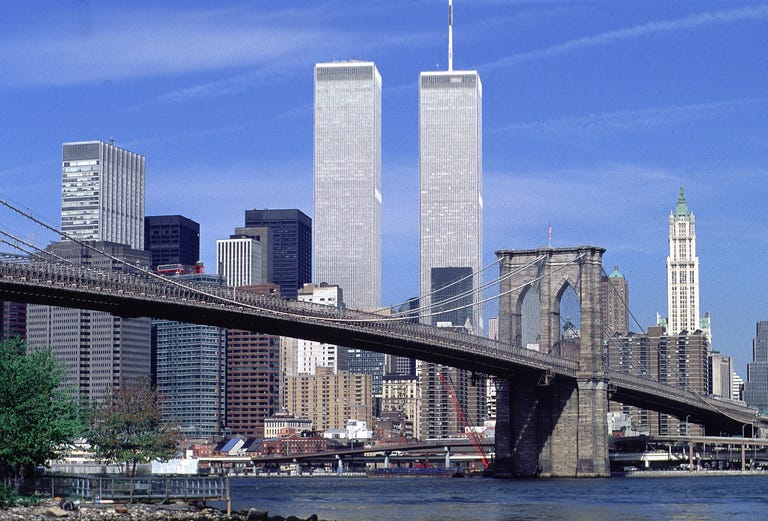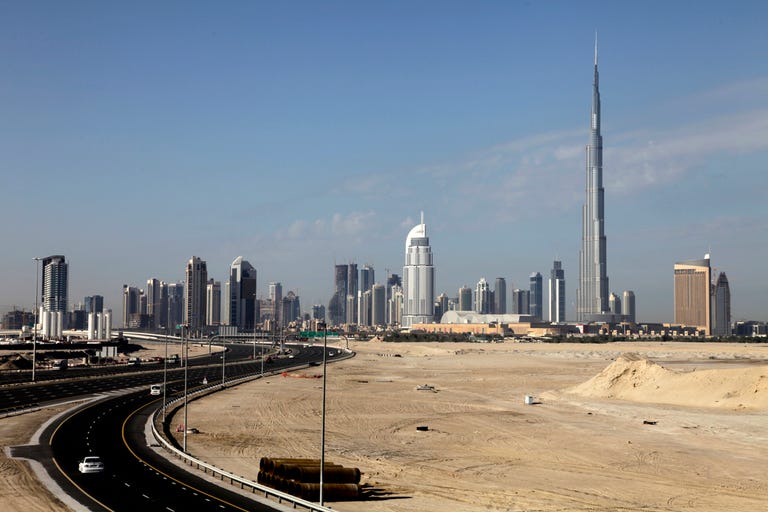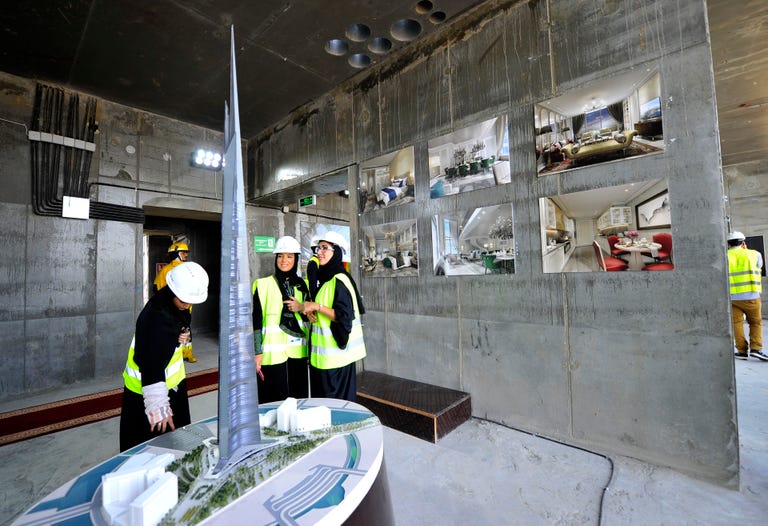A Brief History of Skyscrapers in 7 Titanic Towers
The modern age of skyscrapers started in Chicago, but has expanded far beyond.

GETTY IMAGESBETTMANN
By Tim Newcomb
Today, we take for granted the towers of iron, steel, and glass that make up the modern day skyscraper. These monuments to urban life started taking shape in the late 1800s before really coming into their own in the early to mid 1900s. Since then, the relatively quiet modern age of the skyscraper seen their heights growing ever higher. Here's a brief history of their development and evolution as illustrated by seven of the most important skyscrapers ever built.
1
GETTY IMAGESGEORGE RINHART

2
American Surety Building, New York
While only the second-tallest in New York when it opened in 1896, the 21-story, 312-foot American Surety Building still stands, as opposed the Manhattan Life Building that beat its height by a mere foot at the time. The Surety building ushered in steel-frame and curtain wall construction in New York City, even as cities in Europe and and elsewhere were outlawing tall buildings out of safety and sanitary concerns. New York City's fondness for the towers would prove to be more than a passing fad.
GETTY IMAGESTHE NEW YORK HISTORICAL SOCIETY
3
Empire State Building, New York

Despite the undeniable impressiveness of the Chrysler Building, the Empire State Building in Manhattan stands alone as New York's most iconic and most influential skyscraper. Opened in 1931, it was a jaw-dropping 102 stories and 1,250 feet tall, beating the Chrysler Building by just a few hundred feet. The Empire State Building stood as the world’s tallest for over 40 years, using a steel frame clad in Indiana limestone for its structure that proved iconic both for engineers and New York residents.
4
World Trade Center, New York

GETTY IMAGESJEFF OVERS
Much in the way that internal steel frames enabled the first generation of skyscrapers, the idea of multiple structural systems within a single building give rise to a new generation of even taller ones. Architect Minoru Yamasaki used multiple columns of “tubes” developed by architect Fazlur Kahn to take the World Trade Center to new heights. Opened in 1973 and stretching up 1,368 feet, the WTC was the first real example of this new style of skyscraper design. Tallest in the world for just a hot second until the Sears Tower opened in Chicago, the monumental pair of towers were also made possible by banks of special express elevators and "sky lobbies" where riders could transfer between various lifts on their way up. While the duo was laid low in 2001, their successor One World Trade Center, stands even taller.
5
Sears (Willis) Tower, Chicago

GETTY IMAGESBETTMANN
Opened as the Sears Tower in 1973, this 110-story, 1,450-foot-tall Chicago tower took the title of tallest in the world from New York’s still-newly-minted World Trade Center. The Sears Tower, now known as the Willis Tower, was designed by Fazlur Kahn himself, making use of the tubular column strategy to make the tower ever taller and more stable without requiring it to taper at the top. The world's tallest until 1998, the Sears Tower provided a foundation for even further development.
6
Burj Khalifa, Dubai

GETTY IMAGESKUNI TAKAHASHI
While it didn't take the title of world's tallest from the Sears Tower directly, the famous Burj Khalifa marked a seismic shift in the history of skyscrapers. Opened in 2010 at 2,717 feet tall, the Burj Khalifa's record height was made possible by a combination of reinforced concrete, exterior cladding, and a twisting design intended to thwart high winds. Designed by Skidmore, Owings & Merrill, the same firm behind work on Sears Tower and World Trade Center, the Dubai masterpiece still stands as the world’s tallest.
7
Jeddah Tower, Saudi Arabia

GETTY IMAGESAMER HILABI / STRINGER
Originally intended as the first skyscraper able to reach one mile in height, soil conditions have have forced the Jeddah Tower in Saudi Arabia to settle for a lesser record. Scheduled for a 2020 completion, the tower instead will shoot for one kilometer in height—over 3,280 feet. Such a feat would handily beat the Burj Khalifa as the world’s tallest, if all goes to plan. Designed by Adrian Smith, who was the lead designer on the Burj Khalifa project, the triangular design will help soften wind loads while giving the tower a distinct look in addition to its record-setting height. The only question is what will come next.

No comments:
Post a Comment